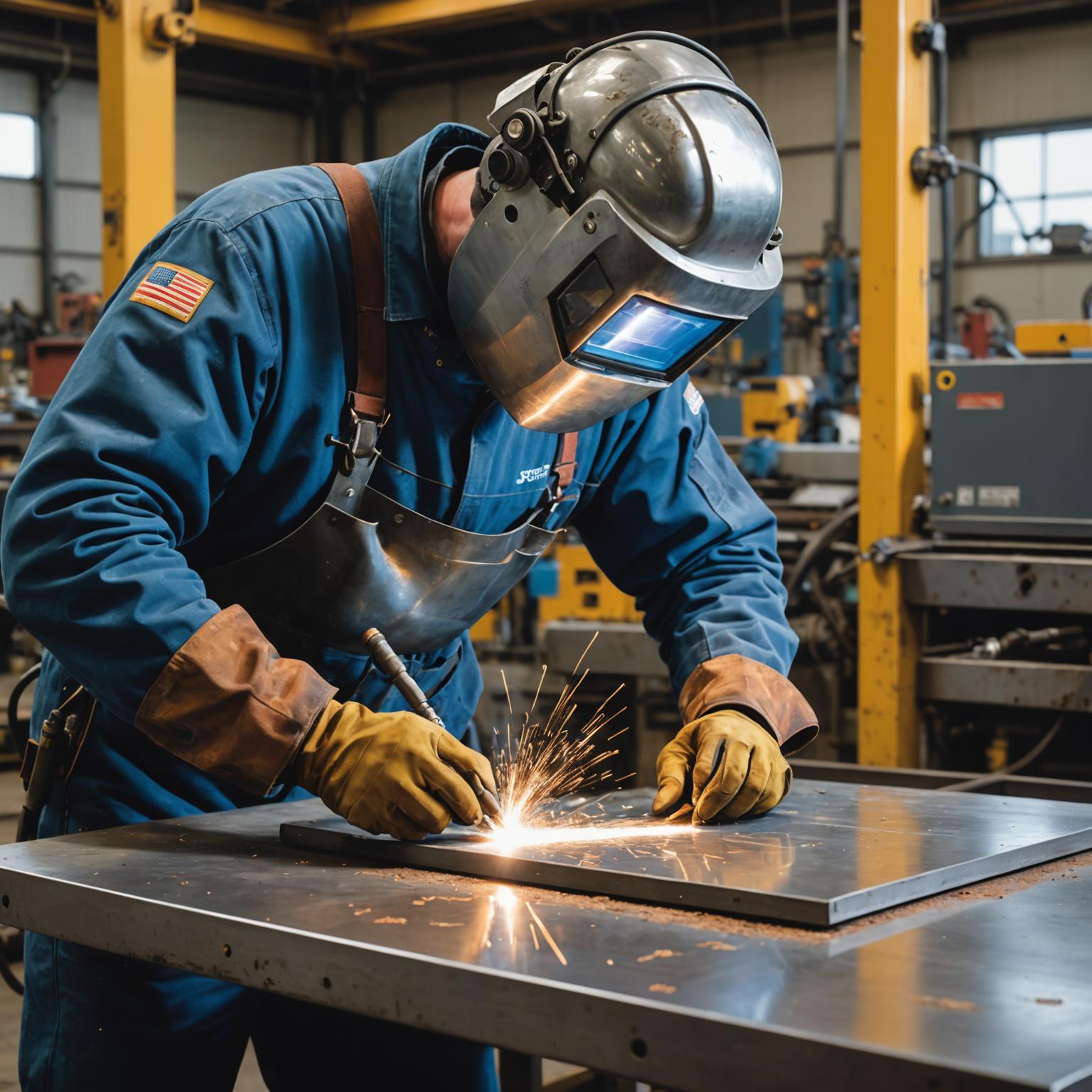It can be a frustrating and confusing experience: you’ve chosen 304 stainless steel for its renowned corrosion resistance, only to find rust forming after a welding job. This common issue leads many fabricators and engineers to ask, Why does 304 stainless steel sheet rust after welding? The answer isn't that the material is faulty, but rather that the intense heat of welding fundamentally changes the steel's microstructure in the affected area. Understanding this chemical reaction is the first and most critical step towards preventing it and ensuring the longevity and integrity of your finished product.
Understanding 304 Stainless Steel's Protective Layer
Before we dive into the effects of welding, it's essential to understand what makes 304 stainless steel “stainless” in the first place. This popular alloy is primarily composed of iron, chromium, and nickel. The magic ingredient for corrosion resistance is chromium. When exposed to oxygen in the atmosphere, the chromium on the surface of the steel forms a very thin, invisible, and durable passive layer of chromium oxide. This passive film is what protects the underlying iron from reacting with oxygen and moisture, which would otherwise cause rust. This layer is also self-healing; if scratched or damaged, it will quickly reform as long as there is oxygen present. This remarkable property is why we rely on stainless steel for everything from kitchen sinks to critical industrial components.
Why Does 304 Stainless Steel Sheet Rust After Welding?
The problem begins when high heat is introduced, as is necessary for welding. The specific issue is known as weld decay or sensitization. When 304 stainless steel is heated to a temperature range between approximately 800°F and 1500°F (425°C to 815°C), a detrimental change occurs. The carbon within the steel alloy becomes highly reactive and bonds with the chromium, forming chromium carbides along the grain boundaries of the steel. This process effectively 'steals' the chromium from the surrounding area, depleting it of the very element needed to form the protective passive layer. This chromium-depleted zone, located right next to the weld bead, loses its stainless properties and becomes highly susceptible to corrosion. When exposed to moisture, this heat-affected zone will begin to rust, a phenomenon known as intergranular corrosion. Other factors can also contribute, such as using carbon steel tools (like wire brushes or hammers) on the stainless steel, which can embed iron particles that later rust and compromise the surface.
Proactive Measures: How to Prevent It Before and During Welding
Fortunately, there are several effective strategies for rust prevention, and the process starts long before the final cleaning. Answering the question of How to prevent it? involves a multi-pronged approach that covers material selection, preparation, and technique. First, consider using a low-carbon grade of stainless steel, such as 304L. The 'L' stands for 'low carbon,' and this variant contains significantly less carbon than standard 304. With less carbon available, the formation of chromium carbides during welding is drastically reduced, preserving the steel's corrosion resistance. Second, meticulous cleaning is non-negotiable. The weld area must be free of all contaminants like oil, paint, grease, and dirt. Furthermore, it is crucial to use tools dedicated solely to stainless steel to avoid cross-contamination from carbon steel. Finally, controlling the welding process itself can help. Minimizing heat input by using a lower amperage, increasing travel speed, or using techniques that concentrate the heat can reduce the amount of time the steel spends in the sensitization temperature range.
Post-Weld Treatments to Restore Corrosion Resistance
Even with the best practices, some level of heat tint and sensitization may occur. Therefore, proper post-weld treatment is the final, crucial step to guarantee a rust-free finish. The first action is mechanical cleaning. The discolored heat-affected zone, known as the heat tint, must be completely removed, as this layer has poor corrosion resistance. This can be done using a stainless steel wire brush (never a carbon steel one) or a dedicated grinding/flap disc. Once the surface is mechanically cleaned, a chemical treatment is often necessary. This involves applying a pickling paste or solution. These acidic products are designed to remove the heat tint and dissolve any embedded iron particles and chromium carbides, effectively etching away the compromised surface layer. After pickling, the area must be thoroughly rinsed with clean water. The final step is passivation, which involves applying a mild oxidant, typically a nitric acid solution, to help the protective chromium oxide layer reform quickly and uniformly across the entire surface, restoring the steel's full corrosion-resistant potential.
Choosing High-Quality Materials for Superior Results
Ultimately, achieving a flawless, durable, and corrosion-free welded product depends on a combination of knowledge, technique, and the quality of your starting materials. While proper procedure can solve many issues, starting with a superior base material provides an undeniable advantage. Our high-gloss, precision-engineered steel sheets are manufactured to the highest standards of strength and consistency. Their exceptional resistance to deformation and their uniform thickness guarantee optimal, predictable performance during critical fabrication processes like welding. By choosing a premium product with a superior finish, you are not just investing in aesthetics; you are building a foundation of quality that makes preventative measures more effective and final results more reliable. Harness the strength and elegance of these advanced steel sheets for your next project to experience the pinnacle of modern metallurgical technology and ensure your work stands the test of time.








